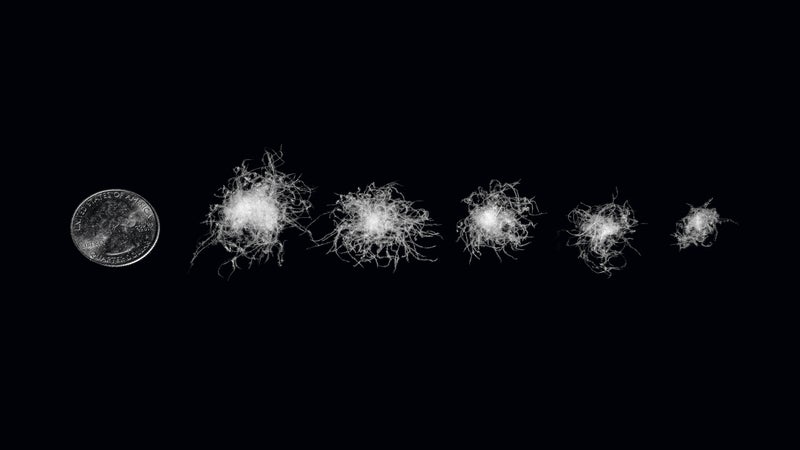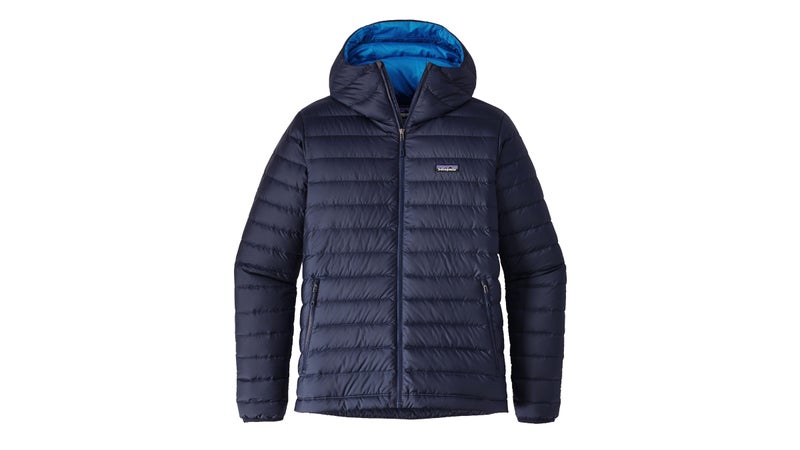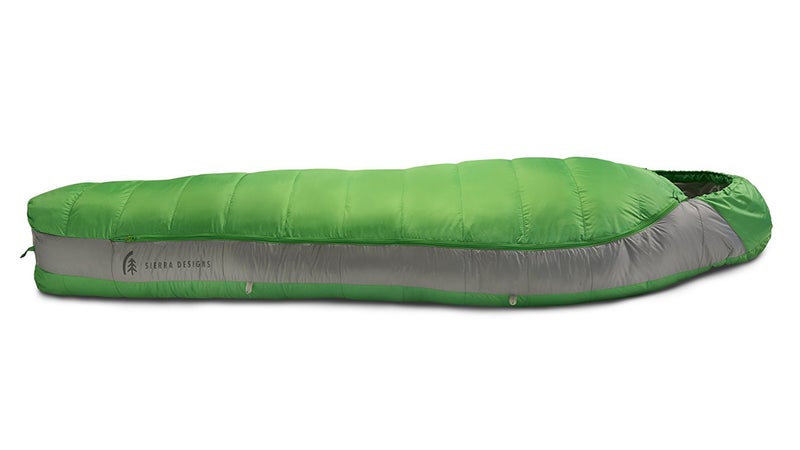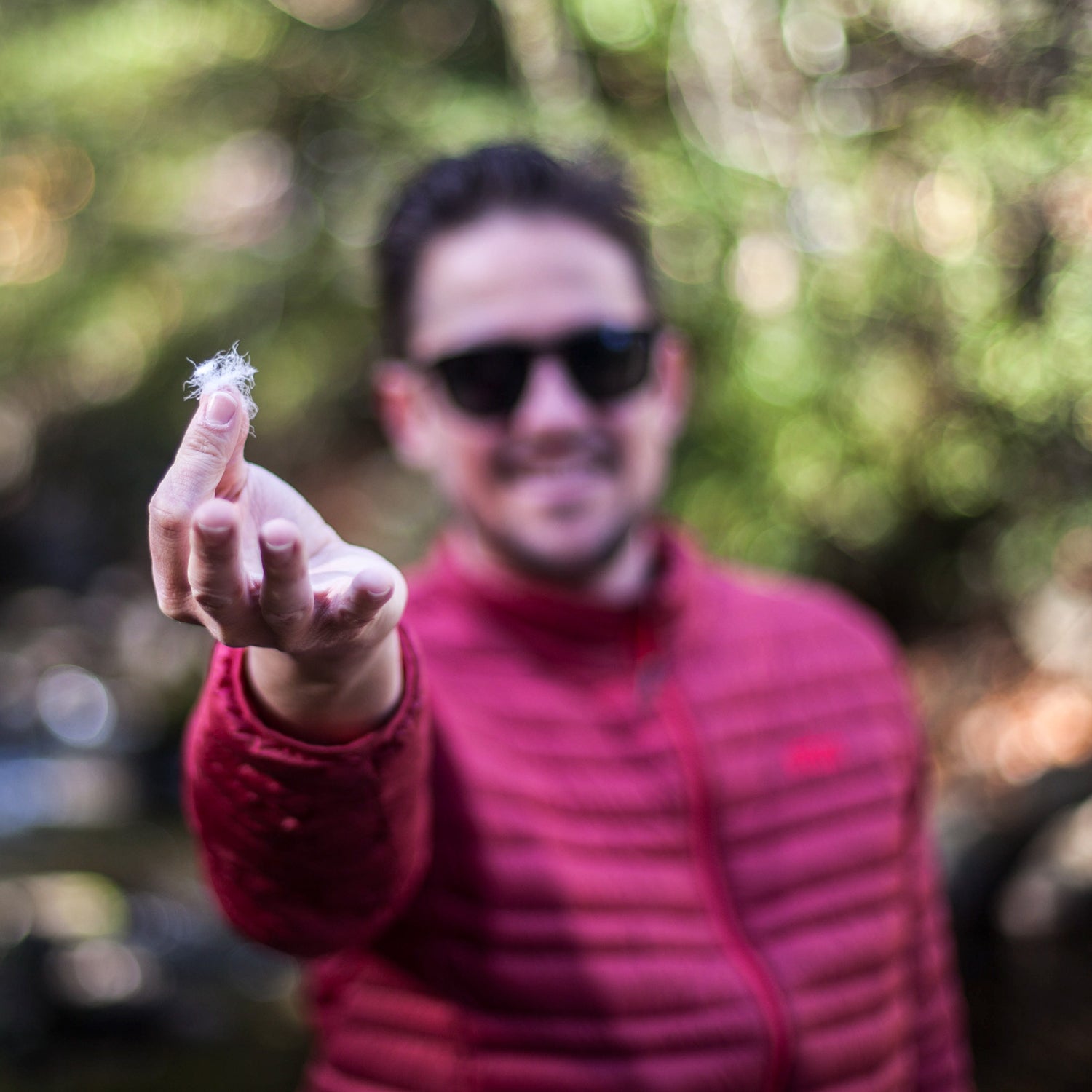Down 101

Structure
It’s a common misconception, but down is not a feather. “It’s a three-dimensional spherical plume,” says president Daniel Uretsky. Feathers—the quills with filaments branching off of them—lack down's insulating power. The down clusters commonly used in outdoor gear differ in size from a dime to a quarter. Down is incredible to look at extremely close up—an intensely intricate network of tiny little filaments that radiate out and have barbs that link together.
Insulating Power
Down’s three dimensional nature creates dead space to catch your body heat, and those filaments and barbs mentioned earlier add an extra thermal bump by boosting loft.
The most common term you hear thrown around when it comes to down’s warmth is fill power. This is simply a measure of volume—the number of cubic inches that a 30-gram cluster of down plumes (with some feathers mixed in) will take up. Most fill powers in outdoor gear range between 550 and 900. Generally speaking, something with a higher fill power has larger down clusters. “900 fill power will be about the size of a quarter, and a 550 is closer to a dime,” Allied’s creative director Matthew Betcher says. Though larger down clusters will make a jacket pack down smaller and lighter, they won't necessarily make it as toasty because you can fit more small clusters into a baffle, potentially equaling the same warmth.
The Bird
All down comes from either geese or ducks. Geese, the larger animal, usually create larger down clusters than ducks. But, as Uretsky says, “You could always use more duck down to hit the same ratio of goose down.” Within that, just like breeds of dogs have their own types of fur, different breeds of duck and geese create different types of down and feathers. But the differences are so small I wouldn’t suggest getting too hung up on it—many outdoor brands don't even heavily advertise the species the down comes from.
Down-to-Feather Ratio
All fills in jackets and sleeping bags aren’t exclusively down, but a mixture of down and feathers “What that ratio is will depend on the quality specs you are looking for,” Uretsky says. In order for something to be considered a down jacket in the U.S., it has to contain at least 75 percent down. High-end jackets will top out at 90 percent down, 10 percent feathers. Generally speaking, a higher percentage of down creates a product with a better fill, but it does not always mean a better product. More feathers can sometimes be beneficial, since they’re more rigid and create structure inside a baffle of a jacket or sleeping bag, which can make the fill stand up more and also back up the fragile down.
�ѴǾ����ٳܰ�����
There are certain circumstances where down becomes essentially worthless as an insulator. Its Achilles' heel is moisture. If down gets completely soaked, the filaments on each cluster stick together, eliminating that heat-trapping dead space and robbing it of its warmth. “Water drops collapse the structure of the down,” Robert Naughter, insulation manager at , says.
Many manufacturers are now treating their down with hydrophobic compounds that certainly make them better at dealing with moisture (more on that later). But at the end of the day, synthetic insulation is king at staying warm when wet, since it won’t lose its structure, even if it isn’t quite as good at retaining heat. Legendary alpinist obsesses about traveling light expeditions, but will add ounces—sometimes pounds—of excess weight to his kit by bringing synthetic jackets and sleeping bags. “If I’m going to be overnight or on an expedition, I am going to go synthetic,” House said. He used a synthetic Patagonia Das Parka to guide in places like Denali and Chamonix since the nineties, long before he was sponsored by the company.
Ethical Concerns
There are plenty. Due to the fact that down is a bi-product of the of the goose and duck meat industry, and given that the vast majority of the down manufacturers are using is from far away places like China and Eastern Europe, it’s extremely difficult to keep track of how those ducks and geese are being treated before and during their slaughter.
To help quell some of the animal rights issues, measures like (RDS) and (TDS) have been put in place to ensure the geese and ducks are treated humanely. “Gone are the days when you can just shake somebody’s hand and say, ‘OK great, it’s everything you say it is.’” Naughter says. “Now we, as an industry, have invented these traceability measures that take into account on-site audits and documents of how the birds were raised, where they were shipped, and when they were killed.”
Down in Gear
Jackets
Manufacturers typically keep down in place in a jacket by blowing it into baffles. The size of those baffles and the amount of down within them makes a huge difference in how a jacket insulates. At its most basic, a big-ass down jacket—regardless of the quality of the actual stuffing—is going to be a lot warmer than one with tiny baffles, even if those baffles contain the best down in the world. Smaller baffles mean less concentrated down to catch less heat, plus they potentially have more stitches where it could escape.
Something with a higher fill power will pack down smaller and be lighter than the same product with a lower fill down. Don’t get fixated on high fill powers, though. It won’t give a very thin jacket magical warming properties—you still need thickness to make warmth happen—it will just make the jacket lighter and easier to pack. “If I had an 800-fill Down Sweater and a 600-fill Down Sweater, the 600 fill might be just as warm, it would just weigh more,” says Naughter.
Then there’s how the jacket hugs your body. “Fit can completely blow all of your materials technology out of the water,” Naughter says. “If a jacket doesn’t fit right, you’re going to lose all this trapped warm air and everything you are trying to do is going to go out the window. Ideally you want a jacket to fit you snugly but not overtly tight.”
Sleeping Bags
Higher fill down packs better but won’t give you a better night’s sleep. “You pay for compressibility and lightweight,” VP of sales Mike Welch says. “The higher fill power down, the more compressible it will be so it will pack up smaller and it weigh slightly less. Those are two real benefits to a consumer if it’s important to them, but they come at a real cost. You may be able to knock three or four ounces off of the bag, but you are going to pay almost $100 more.”
While a super tight down mummy bag is going to be the lightest and most compressible option on the market, if you feel trapped and uncomfortable in it you won’t sleep well, regardless of the fill. “Weigh the experience of a good night sleep with how light and compressible you want to get,” Welch says. Focus on fit and comfort level first. The advice to not get blinded by fill power applies here too.
Innovations in Down
Anti-Moisture Tech
Companies like and have treated down with hydrophobic chemicals that make it more resistant to absorbing moisture. I’ve tested both and can vouch for the fact that down treated with either can get considerably wetter than non-treated down before it loses its structure, plus dries a lot faster. But it’s not a magic bullet. In really wet climates, you'll still want a synthetic fill.
Down-Synthetic Hybrids
Some materials companies (like synthetic insulation pioneer ) have combined synthetics with down in an effort to create a best of both worlds combo of warmth, weight, and water-repellency. This method involves actually intertwining hydrophobic-treated down with synthetic fills. The jury’s still out on these types of fills, and I haven’t used very many of them myself.
Different Structures
Messing with the structure of a peerless natural insulator is a ballsy move. We’ve seen it blow up in companies' faces, as with Patagonia’s plasma-infused down four years ago. But then there are cases where it works. Take . It’s essentially chopped-up down feathers placed between two layers of synthetic material. The end result is thin sheets of down that aren’t constricted to baffles or as puffy but still extremely warm.
My Picks
Patagonia Hooded Down Sweater ($195)

Even though it's not the most heavy duty down jacket I own, the is really easy to layer underneath a shell. I've had it for a decade at this point, so it's riddled with Gorilla Tape and Noso Patches, but its 800-fill down means that it packs down to about the size of a Nalgene. And Patagonia has traditionally been transparent with where and how it sources its down, so even in 2008 when I bought it, I knew it dodged many of the sticky ethical concerns mentioned above.
Sierra Designs Zissou Plus 700 Sleeping Bag ($100)

This is another item I reach for time after time. uses an old version of DownTek, and I've twice soaked it completely through on kayaking trips but was able to dry it enough to not freeze those nights, even with bouts of snow and rain. It's a lightweight traditional mummy shape, making it great for backpacking trips as well.


